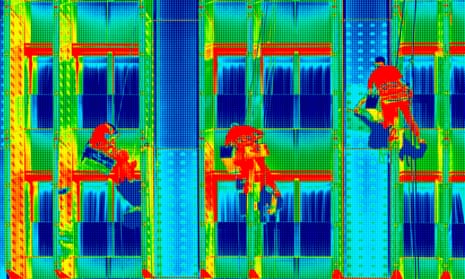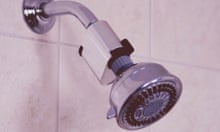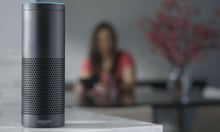At a digital innovation consultancy in central Helsinki, the men’s toilets were causing something of an inconvenience. The Finnish company, Futurice, employs many male employees and the bathrooms were often occupied.
However, now they can find out if one is free without leaving their desk. An app with a live map of the office tells them. “The bathrooms on the map turn red when they’re occupied and green when they’re unoccupied. Then you know where to go,” says Paul Houghton, who has the grand title of director of wizardry and development at Futurice.
The live map was created by Houghton and his colleagues to explore whether internet of things (IoT) technologies, where objects communicate with each other over the internet, could improve working life for staff and also save them time.
It displays real-time information about what’s happening in the office, for example quiet places to work. Using Wi-Fi beacon triangulation, it shows where someone is in the building at a particular moment (their marker moves when they move) and is designed to encourage ad hoc social interactions and make it easy to find people. Soon it will have a heat map showing areas that are particularly warm or cool.
Houghton, who is the mastermind behind project Vör, says: “We built the whole service around the idea of indoor location. It’s an experiment in creating the office of the future. But it’s also because we moved office from one part of Helsinki to the centre where we have a new open [plan] office type of environment and there were some problems with this new space that we felt we could address with technology.”
A designer was brought in and staff were interviewed about what they wanted. Besides the bathroom issue, another common irritation was around hot-desking. “Because we’re right in the centre of town we have less space and because we’re a consultancy our people are away on customer site. So when you come in you don’t have a permanent place to work. The first thing you think when you walk in is: where am I going to sit today? Where are my friends or teammates?”
The team began experimenting. Beacons, (Futurice uses small wireless sensors that can attach to a location or object, they broadcast tiny radio signals which a smartphone can receive and interpret), switches, cameras and air quality sensors were placed around the office, and these communicate with employees’ phones over the office network via the Android app. Motion sensors send information to the map about which desks are free.
However, the experiment has discovered that, in certain areas of office life, the technology wasn’t welcome. “We put motion sensors in the [men’s] bathrooms, and I thought it would be interesting to also put in an air-quality sensor in the bathroom, so it would sense methane in this case,” says Houghton. “But I was kicked out of the ladies’ room with my tail between my legs because they told me, in no uncertain terms, that this is their private space and they didn’t want any spaceship-looking sensors.”
It’s a light-hearted point but highlights serious concerns around the internet of things and privacy. While knowing where your colleagues are in real time might be useful, isn’t there something sinister about being able to watch a colleague’s every move? Offices can breed resentments and personality clashes, so how can they ensure this won’t be used against people?
Houghton points out the project has been created by staff, not the company, and they have endeavoured to put the user in control of their own information. “It’s an entirely opt-in system. It’s been created by a few of us employees playing around. You can turn it off … or you can just not install it on your phone. Not everyone uses it, for sure.”
Then there’s the question of the data generated and what happens to it. Houghton says none of the information leaves the office. “It’s not in the cloud. It’s not written down anywhere. There’s no record, it’s just what’s happening near me right now.” They have no plans to sell the software, says Houghton, it’s just for internal use.
It’s unsurprising that businesses are experimenting with the internet of things. Those that use these technologies experience clear benefits, according to a survey in 2014 by the Harvard Business Review. Of those polled, 58% said it increased collaboration within the business while 54% believed it increased employee productivity.
Mike Gotta, research vice president at IT research and advisory company Gartner, says the idea of “indoor mapping”, or a “Google maps for the building” could become a handy tool for office staff. “Imagine you’re a new hire at a big company, you’re going to meet someone but you don’t know where they sit. All you see is a sea of cubicles.” As the new recruit walks through the office, information could be sent to their phone telling them about the department they’re walking through, says Gotta.
The technology could also be used to promote wellbeing, says Gotta. The health conscious could be given the longest route to get from A to B. “If you’re 15 minutes early for a meeting you could walk the long way.” It’s not a big leap from apps that are already out there. “There are some consumer apps – you need to apply that concept to the workplace,” he says.
Gerard Grech, chief executive of Tech City UK, says: “We’ve seen great examples of IoT being adopted within offices to boost productivity, keep staff happy, improve the work environment and save energy – but these are just a few areas where IoT is being applied.”
He gives the example of marketing agency Partners Andrew Aldridge, which has created a detector that automatically triggers purifiers if air quality in the office is poor.
Many larger tech companies around the world are using IoT to drive business performance and morale within the team, says Grech. E-commerce company Klarna, based in the UK and Sweden, and US-based Twilio have connected live data and messages to screens throughout the office to keep staff updated in real time or to say thank you to someone who helped out a fellow employee.
“We’re merely scraping the surface of what could be achieved if more offices look at how they can adopt the internet of things and data to improve everything from operations to sales, and happiness to product development,” says Grech.
Many people will feel uncomfortable with the idea of technology being deployed to promote their happiness at work. However Futurice’s Houghton doesn’t see it that way. They haven’t measured whether staff productivity has increased. However he says: “These little conveniences add up and they save a little bit of time. They make things a little easier to manage in a constantly changing world.”
Looking for a job? Browse Guardian Jobs or sign up to Guardian Careers for the latest job vacancies and career advice











Comments (…)
Sign in or create your Guardian account to join the discussion